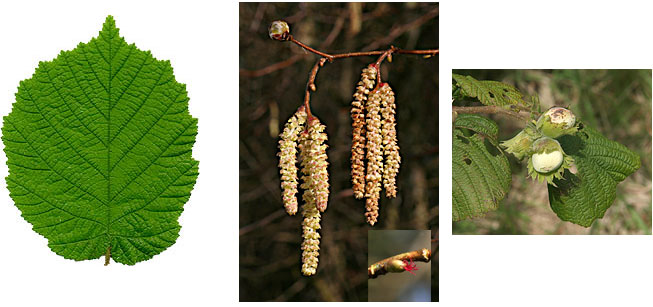The Trees at Keele
Hazel Corylus avellana

Origin: native to all parts of the UK, being found up to 700m. It is abundant on all types of soil from chalky through neutral to mildly acidic as a coppice tree, in hedgerows and as an undershrub in woods. It is usually a multi-stemmed shrub up to 6-7m but can reach 15m. It prefers damp, lowland soils, often growing in the shade of broad-leaved trees such as oak.
Flowers: are most easily seen in spring when the long, yellow male catkins appear before the leaves. The rather peculiar, red female flowers (inset) are often difficult to see.
The leaves have sharp, irregular triangular-shaped teeth; are roughly hairy and dark-green above with soft white hairs on the veins below.
The fruits are the familiar hazel nuts, which are not always easy to find.
Uses : in the past it was the tree of choice for domestic use such as firewood, "wattle and daub" building, thatching spars, fences and garden plant supports. There is still a small hazel coppice industry today.
Location : throughout the woodland and along hedgerows.

